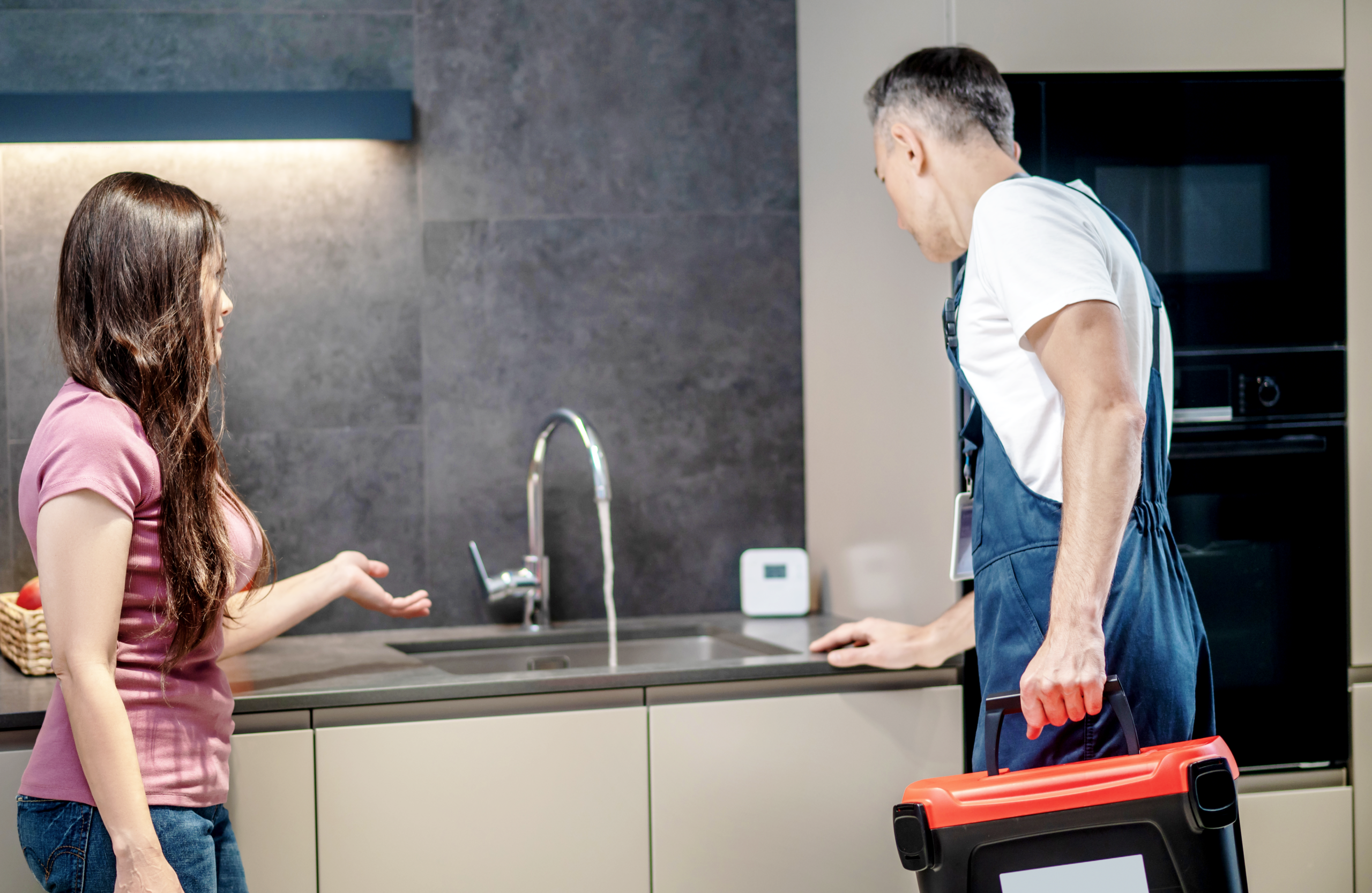 The plumbing system in a household is one of the most important things to consider when moving in, or purchasing a home. Unfortunately, even the best plumbing system can suddenly erupt, causing severe problems in any house. While there is no 100% guarantee that everything will be flawless, regular inspections are of crucial importance. They can help you erect an issue in its early stage and prevent it from growing bigger.
The plumbing system in a household is one of the most important things to consider when moving in, or purchasing a home. Unfortunately, even the best plumbing system can suddenly erupt, causing severe problems in any house. While there is no 100% guarantee that everything will be flawless, regular inspections are of crucial importance. They can help you erect an issue in its early stage and prevent it from growing bigger.
The bathroom and kitchen have multiple plumbing fixtures and connections. They are the areas you should mainly focus on when inspecting your property for plumbing issues. However, you should not skip the other places in the house where plumbing trouble may occur. Those could be appliances connected to the system or even the house in your garden.
In this article, we will talk about the most important places you should check when inspecting the plumbing at home and the things you should pay the most attention to.
Check the bathroom’s plumbing
Faucets
In a bathroom, the sink, tub, and shower faucets are the most frequently repaired. Check for leaks on a regular basis. To fix leaky faucets, replace worn- washers or cartridges. Water supply pipes hidden in the tub and shower drain walls can be particularly troublesome because hidden leaks can do significant damage before you notice them. Hidden water pipe leaks frequently manifest as indicators of water damage in the space beneath the plumbing pipes. As you run the water, keep an eye on the faucets—if you observe low water pressure or an erratic spray pattern, it could be due to calcium buildup on the aerator. Aerators can be physically removed and cleaned. calcium accumulation can be eliminated by soaking the parts in vinegar.
Drains
Instead of waiting for soap and hair clogs to become solid blockages, you should periodically clear the drain with boiling water or another DIY method, use a drain blocker, and instantly remove hair and debris from the tub or drain blocker.
Toilets
A toilet has numerous functional parts, and any of them can wear down and cause issues. Remove the toilet tank cover and see what happens when you flush it. A toilet tank that keeps running rather than shutting off at the conclusion of the flush cycle wastes a lot of water. Fixing a running toilet is frequently a simple task. If your toilet rocks slightly when you sit on it, or if you detect water seeping around the base, the wax ring that seals the toilet base to the drain opening is likely worn out and has to be replaced.
Caulk seals
Although the caulk surrounding tubs and showers is not technically “plumbing,” when it breaks, it can allow water from a bathtub or shower to get behind walls and under floors, causing severe water damage. Check all caulk beads throughout floors and walls on a regular basis to ensure they are still intact. Fill up any gaps you detect with new caulk. It is a good idea to remove the old caulk and apply a new bead of high-quality silicone tub-and-shower caulk every few years.
Go over the kitchen’s plumbing
Faucets and drains
The kitchen sink is frequently used, and a sink strainer is a common source of leakage. As the water in the sink drains, keep an eye on the strainer and the P-trap. P-trap fittings may need to be tightened, and if the strainer basket begins to leak or becomes corroded, it should be replaced. If a sink drains slowly, a clog may have formed in the P-trap or branch drain; these fittings can be dismantled and cleaned. Clean the kitchen sink drain on a regular basis. Running a moderate homemade drain cleaner composed of vinegar, baking soda, and water down your kitchen sink drain on a daily basis will assist to break up the normal buildup and keep the water flowing. A dripping kitchen faucet is the most common plumbing issue, and it can waste hundreds of gallons of water each year. As you operate the lever on your faucet, keep an eye on it and fix it as soon as you notice something out of order.
Your shut-off valve
When the shut-off valves that control the water supply to the sink faucet, dishwasher, and refrigerator water lines are closed, the flow of water is entirely stopped. Close the valves tightly during your check and ensure they work properly. They should be replaced if they do not completely shut off the water.
You should never forget to check your sewer and septic system. Check your septic system regularly and always pump it when it becomes full. Do not compromise with that. Sewer systems should also be regularly maintained since the connection with a local drainage system can actually lead to issues that do not even begin in your house.
